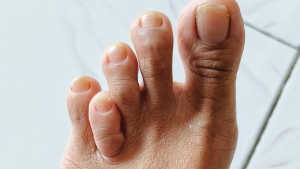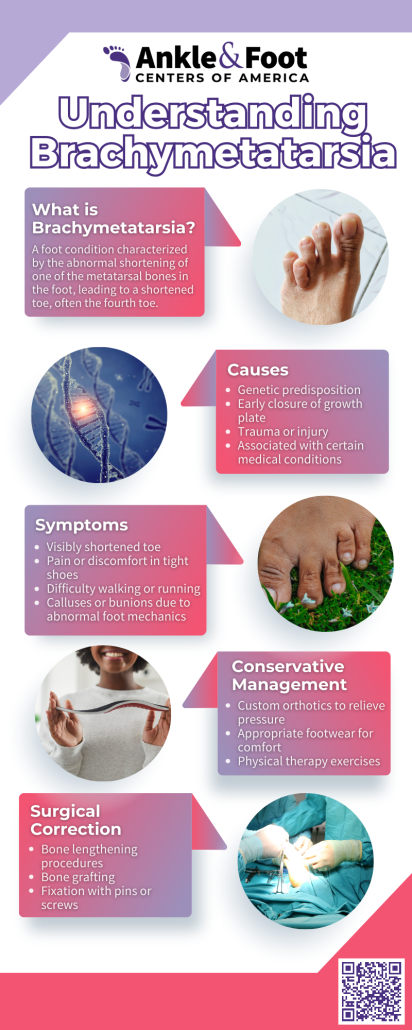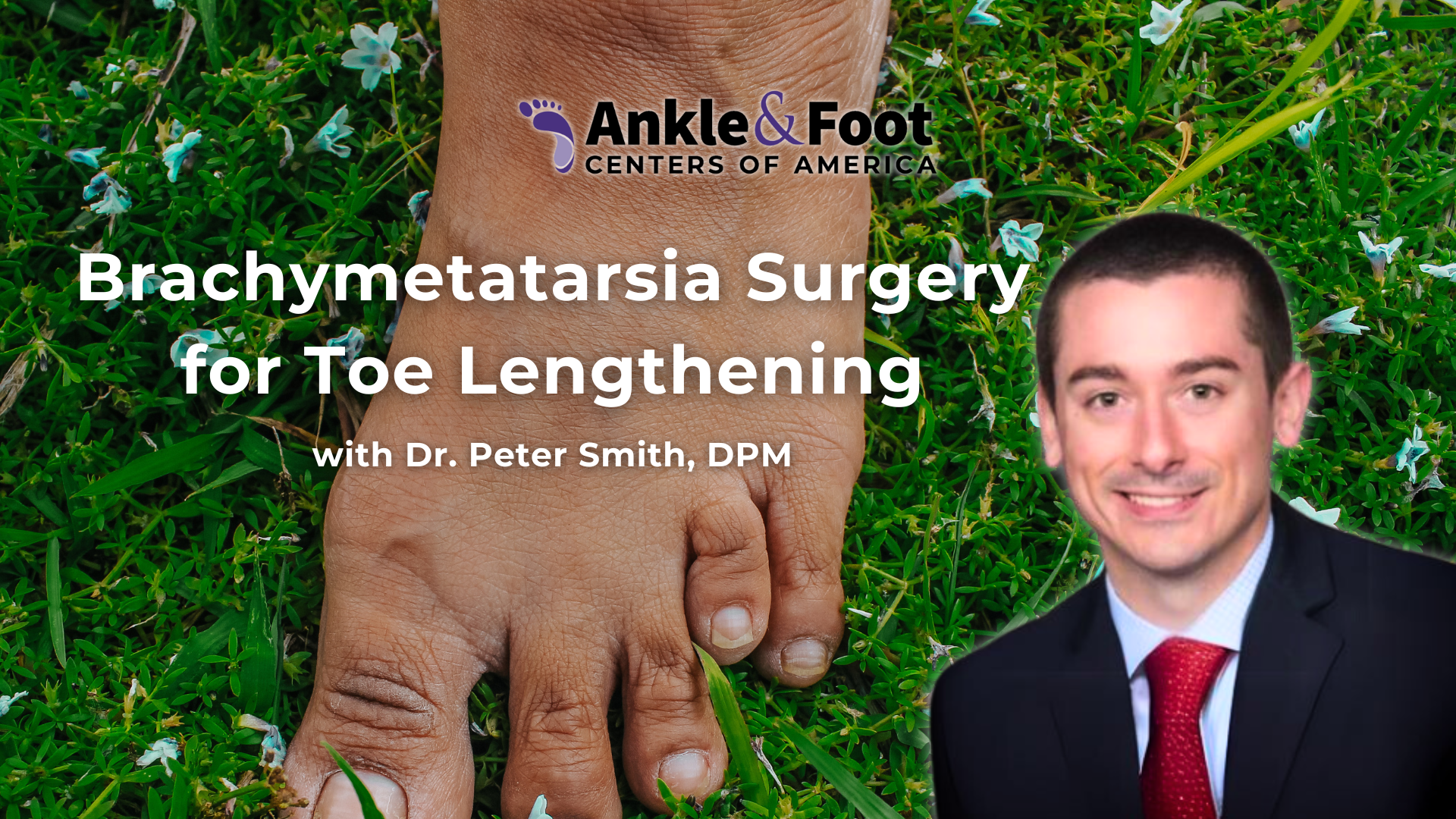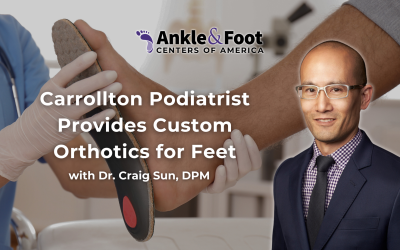Table of Contents
Understanding Brachymetatarsia
Brachymetatarsia, commonly referred to as “short toe syndrome,” is a condition that can lead not only to discomfort but also to a significant impact on an individual’s self-esteem and quality of life. Characterized by an abnormally short metatarsal bone, this condition can cause one or more toes to be disproportionately short, leading to an array of footwear challenges, pain, and often, self-consciousness about the appearance of one’s feet. While it might seem to some as merely a cosmetic concern, for those living with brachymetatarsia, it is much more. It can affect balance, gait, and the ability to participate comfortably in various activities.
The Promise of Toe Lengthening Surgery
 In the realm of addressing this unique and complex condition, toe lengthening surgery emerges as a beacon of hope. This specialized surgical intervention aims to correct the length of the affected metatarsal, thereby restoring both function and proportion to the foot. However, the success of such a procedure is heavily dependent on the skill and expertise of the surgeon performing it.
In the realm of addressing this unique and complex condition, toe lengthening surgery emerges as a beacon of hope. This specialized surgical intervention aims to correct the length of the affected metatarsal, thereby restoring both function and proportion to the foot. However, the success of such a procedure is heavily dependent on the skill and expertise of the surgeon performing it.
Enter Dr. Peter Smith, a name synonymous with excellence in the field of podiatry and, more specifically, in the surgical correction of brachymetatarsia. Dr. Smith brings a wealth of experience, a deep understanding of foot biomechanics, and a compassionate approach to each case, making him the podiatrist you want to see for toe lengthening surgery. Whether you’re grappling with the discomfort or the psychological impacts of short toe syndrome, Dr. Smith’s expertise in toe lengthening surgery offers a path toward not just improved foot function, but renewed confidence and quality of life.
What is Brachymetatarsia?
Brachymetatarsia is a condition that goes beyond the mere cosmetic concerns of having a “short toe.” It’s a structural anomaly where one or more of the metatarsal bones in the foot are significantly shorter than the others, leading to a toe that does not align properly with its counterparts. This condition can affect anyone, but it’s more commonly seen in females and can occur in one or both feet. Symptoms of brachymetatarsia and its notable impact on an individual’s daily life typically become apparent in late childhood or early adolescence, as the feet develop and grow. However, it can sometimes go undiagnosed until later in life, especially in cases where the condition does not cause significant pain or discomfort.
What causes Brachymetatarsia?
 The roots of brachymetatarsia are varied, stemming from genetic predispositions, early closure of growth plates, or traumatic injuries. In some cases, it develops without a clear cause, emerging during the crucial growth years of childhood and adolescence. Symptoms extend beyond the physical shortening of the toe, including pain, difficulty in finding comfortable shoes, and a pronounced self-consciousness about the appearance of the feet. It can also lead to more severe foot problems, such as calluses or ulcers due to abnormal weight distribution while walking or standing.
The roots of brachymetatarsia are varied, stemming from genetic predispositions, early closure of growth plates, or traumatic injuries. In some cases, it develops without a clear cause, emerging during the crucial growth years of childhood and adolescence. Symptoms extend beyond the physical shortening of the toe, including pain, difficulty in finding comfortable shoes, and a pronounced self-consciousness about the appearance of the feet. It can also lead to more severe foot problems, such as calluses or ulcers due to abnormal weight distribution while walking or standing.
Diagnosis and Impact
 Diagnosing brachymetatarsia involves a combination of physical examinations and imaging tests. A podiatrist will assess the foot’s structure, look for any signs of misalignment or discomfort, and use X-rays to evaluate the bone structure accurately. This detailed analysis helps in understanding the severity of the condition and planning the appropriate treatment approach.
Diagnosing brachymetatarsia involves a combination of physical examinations and imaging tests. A podiatrist will assess the foot’s structure, look for any signs of misalignment or discomfort, and use X-rays to evaluate the bone structure accurately. This detailed analysis helps in understanding the severity of the condition and planning the appropriate treatment approach.
The implications of brachymetatarsia stretch far beyond the physical realm, influencing an individual’s lifestyle and emotional well-being. People with this condition often find themselves limited in the types of activities they can participate in without discomfort. From difficulties in engaging in certain sports to challenges in wearing open-toed shoes without feeling self-conscious, brachymetatarsia can significantly impact one’s quality of life.
Recovery after Toe Lengthening Surgery
Recovering from brachymetatarsia surgery is a journey that requires patience, adherence to medical advice, and a focus on long-term foot health. Dr. Peter Smith emphasizes a comprehensive aftercare plan to ensure the best possible outcomes for his patients, combining professional medical guidance with practical steps for at-home care.
Immediate Post-Surgery Care
Immediately following surgery, patients will enter a critical period of rest and recovery. During the first two weeks, it’s essential to keep the foot elevated as much as possible to reduce swelling and discomfort. Pain management, will be tailored to ensure comfort. Dr. Smith and his team will closely monitor each patient’s progress, providing clear instructions on wound care and the use of temporary mobility aids, such as crutches or special footwear.
Follow-Up Appointments
Regular follow-up appointments with Dr. Smith are crucial for monitoring the healing process. These appointments, often scheduled within the first few weeks after surgery and then less frequently over the next six to twelve months, allow for adjustments in pain management, assessment of physical therapy progress, and determination of when it’s safe to return to normal activities. These check-ins are an opportunity to address any concerns and ensure that recovery is on track.
Recovery from brachymetatarsia surgery is a phased process, with each stage designed to maximize healing and restore function. While the timeline can vary depending on individual circumstances, most patients can expect to return to light, normal activities within 3 to 6 months, with a complete return to all types of activities, including sports, by 12 months. The journey may be long, but with commitment to the recovery plan and guidance from Dr. Smith and his team, the path to improved mobility, reduced pain, and enhanced quality of life is well within reach.
Conclusion
Brachymetatarsia is more than just a cosmetic concern; it’s a condition that can profoundly affect an individual’s quality of life, from physical discomfort to emotional distress. Understanding the condition, exploring treatment options, and undergoing surgery can seem daunting. However, with the right care and expertise, individuals suffering from brachymetatarsia can achieve significant improvements in both the function and appearance of their feet.
Dr. Peter Smith stands out as a beacon of hope for those seeking to address this condition. His comprehensive approach, which combines advanced surgical techniques with personalized care, ensures that patients receive the best possible outcomes. Under his guidance, patients are not just undergoing a surgical procedure; they’re taking a pivotal step towards reclaiming their comfort, confidence, and lifestyle.
Are you ready to leave foot discomfort and self-consciousness behind?
Your path to a life full of activity, confidence, and freedom from pain is just a step away. Dr. Peter Smith and our compassionate team at Ankle & Foot Centers of America are dedicated to supporting you through every phase of your journey towards healthier feet.
We understand your need for convenience and care. That’s why we offer easy online scheduling, allowing you to find the perfect time for your consultation from the comfort of your home. Visit us at Ankle & Foot Centers of America. Prefer to speak with someone directly? Our friendly staff is just a phone call away at 770-474-4395, ready to assist you.
From the moment you reach out, you’ll feel the difference. We believe in a patient-centered approach, where your comfort, questions, and concerns are at the heart of everything we do.
Meet Dr. Peter Smith
 Dr. Peter Smith, a resident of Decatur, Georgia, is more than just a podiatric surgeon; he’s a dedicated family man, community supporter, and military veteran. Dr. Smith brings a unique blend of personal dedication and professional excellence to his practice. His service as a podiatric surgeon in the United States Army for over four years has instilled in him a strong sense of discipline, precision, and care for his patients. Beyond his professional life, Dr. Smith is deeply involved with his local community and the Greater Atlanta Veteran community, showcasing his commitment to service and wellness outside the operating room.
Dr. Peter Smith, a resident of Decatur, Georgia, is more than just a podiatric surgeon; he’s a dedicated family man, community supporter, and military veteran. Dr. Smith brings a unique blend of personal dedication and professional excellence to his practice. His service as a podiatric surgeon in the United States Army for over four years has instilled in him a strong sense of discipline, precision, and care for his patients. Beyond his professional life, Dr. Smith is deeply involved with his local community and the Greater Atlanta Veteran community, showcasing his commitment to service and wellness outside the operating room.
Education and Credentials
- Educational Background: Dr. Smith is an alumnus of the Temple University School of Podiatric Medicine in Philadelphia, Pennsylvania, where he earned his doctorate in podiatric medicine. He further honed his skills during a 3-year Podiatric Surgical Residency with Rearfoot and Ankle at Reading Hospital, a Level 1 Trauma Center located outside of Philadelphia. His foundational education was completed at Penn State University during his undergraduate years.
- Board Certifications: Demonstrating his expertise and commitment to excellence in his field, Dr. Smith is a Board Certified Fellow in Foot and Reconstructive/Rearfoot and Ankle surgery by the American Board of Podiatric Surgery. He also holds certification in Wound Care by the Council for Medical Education and Testing.
Offices and Affiliations
Dr. Smith serves the community through his practices in Conyers and Stockbridge, Georgia. He is affiliated with several esteemed hospitals and surgery centers, including:
- Henry Medical Center, Stockbridge, GA
- Rockdale Medical Center, Conyers, GA
- Piedmont Newnan Hospital, Newnan, GA
- Piedmont Atlanta
- International Center for Foot and Ankle Surgery, Jonesboro, GA
Dr. Peter Smith represents the pinnacle of care in podiatry, combining extensive medical knowledge with a heartfelt dedication to his patients. Whether you’re seeking relief from foot pain, require surgery, or need specialized care for a chronic condition, Dr. Smith and his team are ready to provide the high-quality, personalized care you deserve.

Frequently Asked Questions
How common is brachymetatarsia? Brachymetatarsia is considered a relatively rare condition, though exact prevalence rates are difficult to determine. It is more commonly observed in females than males and can affect one foot or both. Despite its rarity, podiatrists and orthopedic specialists frequently encounter and treat this condition, indicating that it may be underreported in the general population.
Is brachymetatarsia genetic? Yes, brachymetatarsia can be genetic. It often occurs due to a congenital anomaly or a hereditary predisposition. The condition may also result from the early closure of growth plates in the foot, which can be influenced by genetics. However, not all cases are inherited; some occur with no clear familial pattern, indicating that environmental factors or spontaneous mutations may also play a role.
Is brachymetatarsia a disability? Brachymetatarsia itself is not classified as a disability, but it can lead to functional limitations and discomfort that affect daily activities. For some individuals, the condition can cause significant pain, difficulty in wearing standard footwear, and challenges in walking or engaging in physical activities, potentially limiting their quality of life. In such cases, it can be considered a physical impairment.
 Why are my toes so short? Short toes, particularly if significantly shorter than normal, could be due to brachymetatarsia, where one or more of the metatarsal bones are abnormally short. This condition can be congenital (present at birth), develop during childhood or adolescence, or result from injury. In some cases, short toes may simply be a variation of normal anatomy without any underlying health concerns. If your short toes are accompanied by pain, discomfort, or functional limitations, it’s advisable to consult with a healthcare professional for an accurate diagnosis and potential treatment options.
Why are my toes so short? Short toes, particularly if significantly shorter than normal, could be due to brachymetatarsia, where one or more of the metatarsal bones are abnormally short. This condition can be congenital (present at birth), develop during childhood or adolescence, or result from injury. In some cases, short toes may simply be a variation of normal anatomy without any underlying health concerns. If your short toes are accompanied by pain, discomfort, or functional limitations, it’s advisable to consult with a healthcare professional for an accurate diagnosis and potential treatment options.





